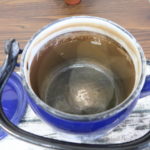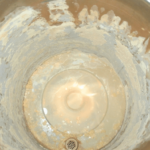Cleaning the kettle with citric acid
In every kettle, be it electric or conventional, scale will inevitably form. This is primarily due to the properties of water, which dissolves metal salts and other trace elements in itself. The most economical and environmentally friendly way to clean your kettle is with citric acid. Our grandmothers and great-grandmothers knew this method. But despite the simplicity of this method, each housewife has her own secrets of how to clean the kettle with citric acid.

Advantages and disadvantages of cleaning the kettle with citric acid
Any kettle, whether electric or ordinary, over time begins to overgrow with an unpleasant light beige bloom of lime, calcium, magnesium and other compounds. If you start this process, then over time the water in such a device will become cloudy and even the smallest fossilized scale particles will float in it. Drinking drinks from it is unpleasant, tasteless and even harmful.

Water from dishes with limescale can harm the body:
- Promotes the formation of plaque in blood vessels
- Increases stress on the liver
- Increases the formation of kidney stones
- Negatively affects the joints

Therefore, it is important to get rid of such a plaque not only for aesthetic reasons, but according to hygienic and sanitary principles. This is especially important in a home where small children or elderly people live.
Depending on the color of the scale, you can determine which elements prevail in the water:
- A milky white bloom indicates an excess of magnesium and calcium.
- The bright white color of the deposits gives off an excess of chlorine
- Yellowish red indicates a large amount of iron in the water
Of course, the industry today offers many great and effective detergents for washing dishes, removing limescale, plaque, and in general for all occasions. Still, citric acid from limescale in an electric kettle remains the main tool in the household. And ordinary dishes are also easier to clean in this way. By the way, all modern chemical products contain analogues of citric acid - since without such compounds it is impossible to eliminate fat, scale and other sedimentary phenomena on dishes.

The citric acid cleaning method is popular for a reason. It has many advantages and, at the same time, is practically devoid of disadvantages.
The main advantages of this folk method:
- Use of organic compounds
- No need to boil the appliance repeatedly
- The cheapest way
- Can be used to clean glassware
- This method is suitable for cleaning pots.
- Save time and money on electricity

Of the minuses of using this tool, only two can be named - this tool needs to be bought separately and kept in the house. But given that it is sold in any store and costs mere pennies, even this minus comes to naught. The second disadvantage is the large amount of time that the cleaning procedure takes. You will need to spend several hours on it. But most of this time, the water will simply settle in the kettle.

Unlike this folk remedy, chemical industrial solutions have many disadvantages. Since chemical agents are usually more aggressive than natural agents. It is for this reason that they clean the dishes faster. But they also have a harmful effect on the inner surface of the dishes. Plastic, plastic, enamel and even the element's coating wears out and cracks much faster.
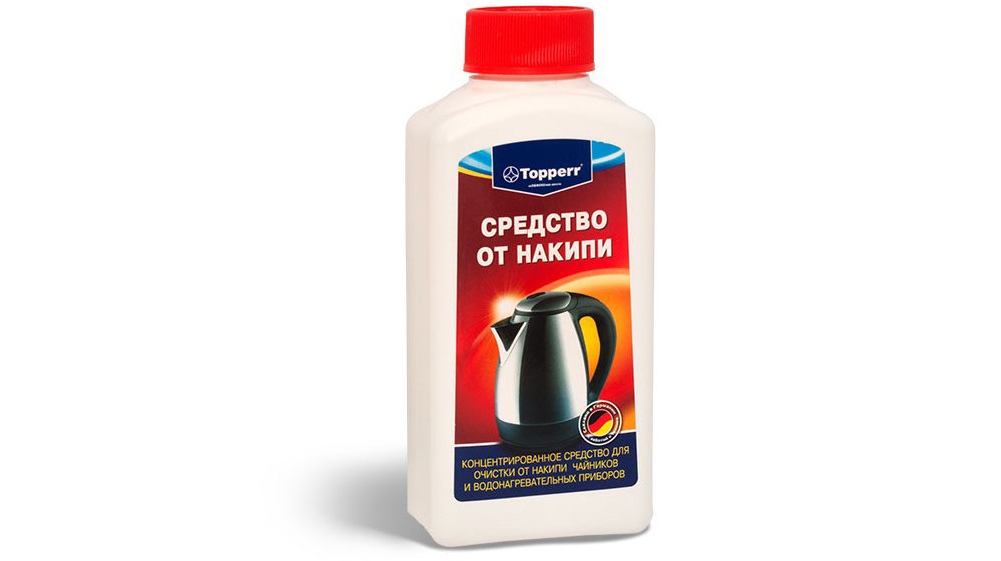
Another disadvantage of using chemicals is harm to health. In any case, microscopic particles of the agent remain in the microcracks of the enamel, plastic and heating element. Subsequently, they get into drinks with water, which is extremely harmful to the body.
After the dishes have been treated with a chemical, the kettle has to be boiled many times - precisely in order to remove all residues for sure. Boiling a kettle over and over takes time and burns electricity. So those who monitor energy consumption in the home often prefer natural remedies.

How to descale properly
In order to prevent scale from forming too thick a layer, which will then be difficult to remove, the kettle must be processed 2-3 times a month. If you do this less often, then the plaque will gradually become visible, and a high concentration of the drug will be required to remove it. Some housewives do just that: they only carry out a thorough cleaning once a month.

There are two main methods for descaling a kettle with citric acid:
- By boiling
- In a cold way
They are also suitable for a regular teapot. For cleaning, it is more convenient to use acid in granules. First, it is necessary to remove all soft plaque and those dirt that are easily separated with a soft sponge. This will significantly reduce the boiling time and the main procedure.

Proportions: how much you need to fill in the funds
The standard calculation for how much citric acid to pour when cleaning a kettle is 1-2 sachets of citric acid per kettle. One sachet usually contains 50 grams of the product. If the volume of the device is small, then one sachet will be enough. The same concentration can be chosen if the plaque is barely noticeable.

In addition to the acid in the granules, you can also use regular lemon. This is exactly what our grandmothers did when there were not even electric kettles yet. You will need half to two lemons. The amount of fruit depends on how dirty the dishes are. For cleaning, the fruits must be cut into small slices together with the peel and used in the same way as the acid in the granules.

How to properly boil water when cleaning
When using a bulk product, it must be poured into the already poured water. Lemon fruits, on the contrary, need to be poured with water. In any case, the device is filled with water to 2/3 of its volume. It is advisable to choose cold water.Boil water for 2-3 minutes. If an automatic shutdown is installed in the kettle, then it will simply need to be turned on several more times.

Then the water is left in a teapot for 3-4 hours. During this time, the hard plaque should have time to soften. After that, it can be wiped off and removed with a regular sponge and felt edge.
Important! When removing plaque, do not use hard or sharp objects. If it still does not rub off, you need to repeat the boiling procedure.
At the end, you need to rinse the container and boil ordinary water in it again. The device is then ready for new use.

Cold cleaning with citric acid
To do this, fill the container with warm water and dissolve 2-3 sachets of citric acid in it. Then leave for 4-5 hours. After that, the water must be poured, and the plaque must be removed with a sponge. In a kettle, you need to boil clean water once. And again you can brew tea.

Important! Only a little scale can be removed with the cold method. Strong plaque can only be washed off by boiling.
Citric acid can also be used to clean the outside of a kettle or other utensils. To do this, you can use simple ways:
- Rub a greasy or dirty place with a lemon wedge and salt, then clean with a sponge
- Put the dishes in another container with lemon water for a few hours

Other cleaning methods
Although citric acid is most effective from scale in an electric kettle, other methods of cleaning dishes are known among the people. However, they are not as popular.
Soda application
Add 1-2 tablespoons of soda to a container filled with 2/3. Let the solution brew for an hour, and then boil. After that, rinse and boil plain water.

Important! This method is not suitable for plastic products, as microcracks may appear after the soda.
Using vinegar
Vinegar can only be used for ordinary teapots; it will not work for electrical appliances. It is necessary to dissolve vinegar in water in a ratio of 1 to 10. Boil this solution, and then let stand for about half an hour. After that, also rinse the device and boil plain water in it.
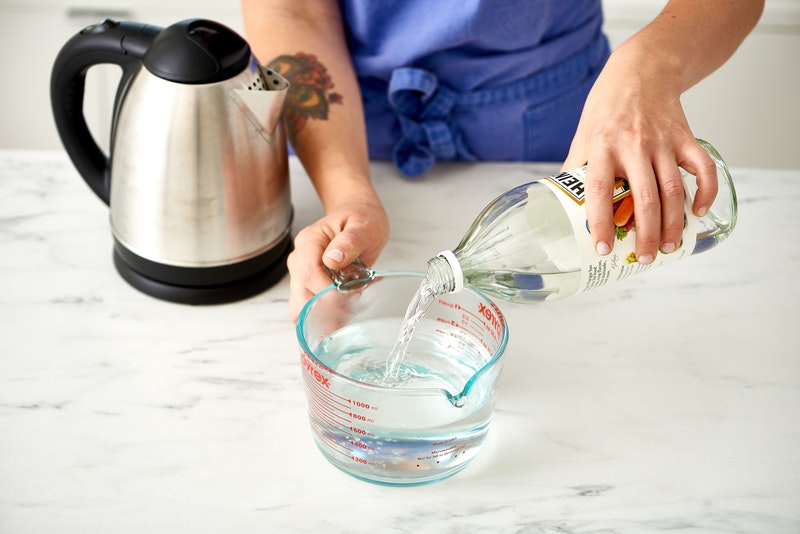
Application of soda
Soda has a high concentration of phosphoric acid, which, like citric acid, can be used to dissolve plaque. To do this, fill the container with a drink, leave for 3-4 hours, and then rinse. In this case, it is better to use, of course, a colorless drink.

Peeling potato or apple peels
Since fruit acids are found in other vegetables and fruits, they can also be used. Usually they take potato or apple peel for this. Put a few pieces in a kettle, add 2/3 of water and boil. Then clean in the usual way. However, this method is less effective, since the peel contains less fruit acids than lemon.
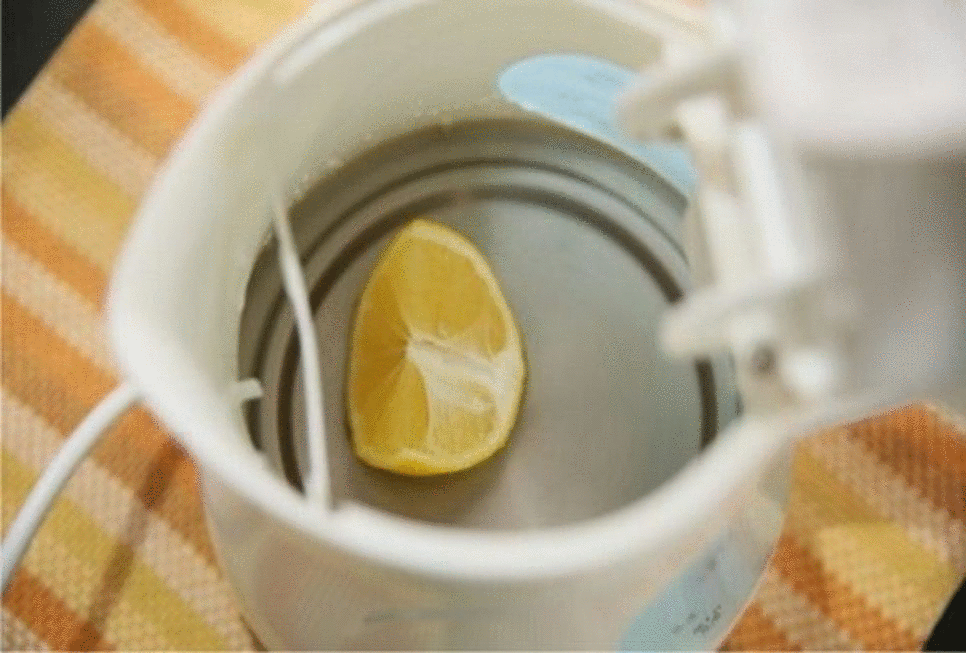
Prophylaxis
Anti-scale citric acid in a conventional kettle and an electric kettle can also be used for prophylaxis. Then a thorough cleaning will be required less often. For prevention, the following methods can be recommended:
- First of all, use water filters. They will remove unnecessary connections from it in advance.
- Boil lemon water once. It is prepared at the rate of 1 tablespoon of citric acid per 1 liter of water. This ritual can be done once a week in the evening.
- Once a week, wipe the device with a lemon wedge, then leave it on for 15-20 minutes. Then the unit can be simply rinsed with cold water. You can also clean glassware.
- Wipe the inner walls daily with a simple damp sponge. You can do it in the evening - it's very convenient.

If you take proper care of the device, then cleaning it will not take much time. And it will last a long time and will delight the owners with delicious and pure tea.
VIDEO: How to descale a kettle with citric acid.

